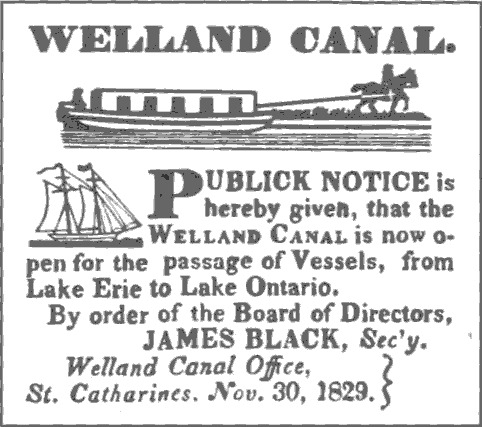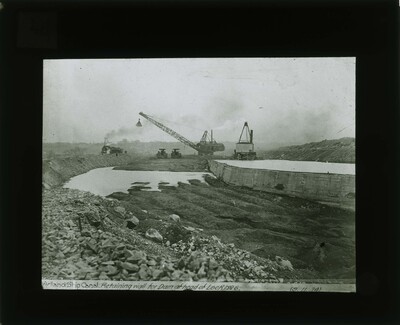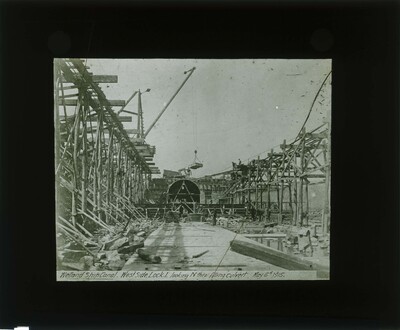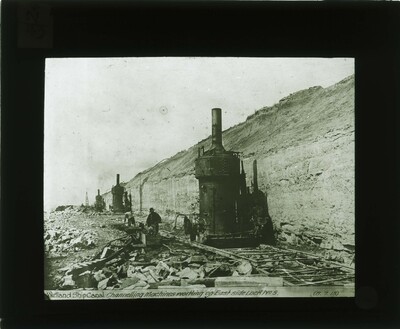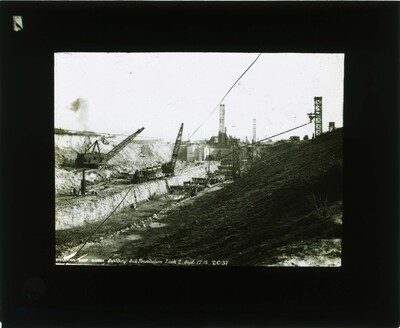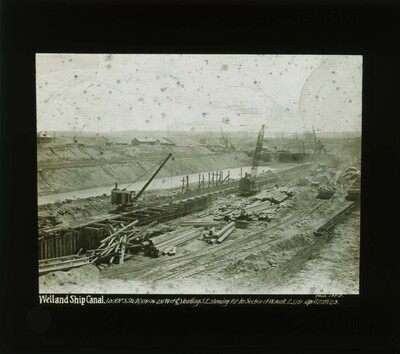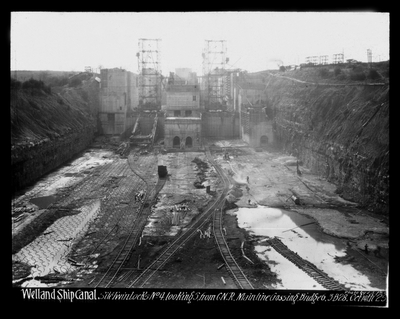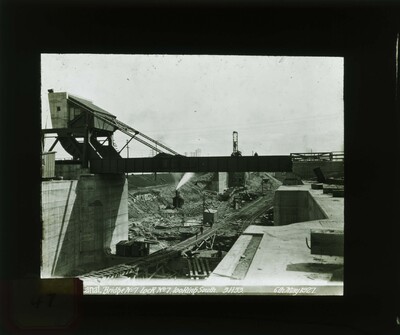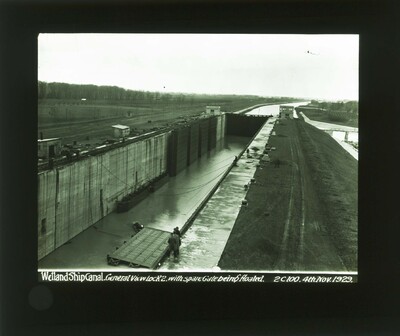Construction
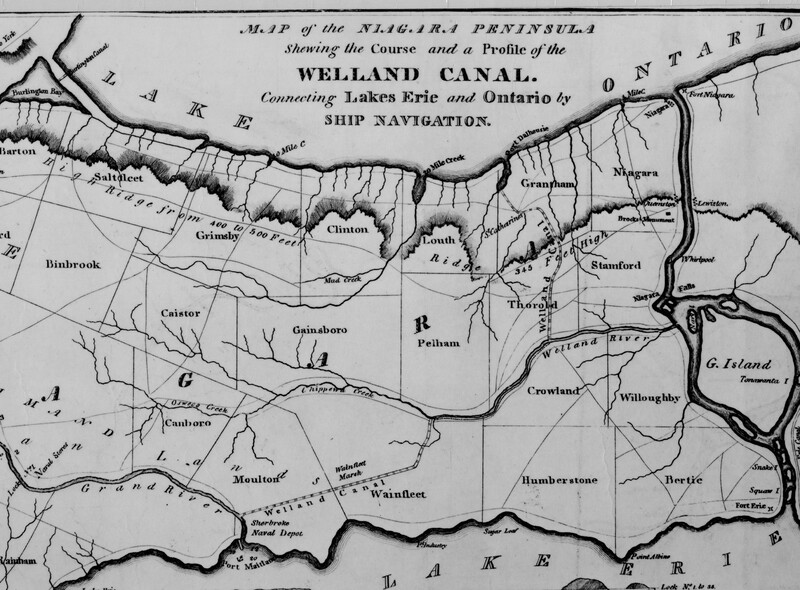
Map of the route of the first Welland Canal before completion of route to Port Colborne, 1828. This first canal linked Lake Ontario to the Welland River. This river intersected with the Niagara river, which could be used to reach Lake Erie. The feeder canal can be seen at the bottom left, connecting the Grand River to the Welland River. This map is part of the Historical Maps of Niagara collection in the Map, Data, and GIS Library, Brock University.
First Welland Canal
After Merritt secured funding for the canal, construction began in November 1824. It was quickly apparent that additional funding would be required because of the physical difficulties encountered during construction. In 1825, a new charter was passed that provided the Welland Canal Company with more capital as well as permission to enlarge the canal so that schooners could be accommodated. This canal was to run from Lake Ontario up the Twelve Mile Creek. From there, it would consist of two branches, one to the Welland River and another branch to the Grand River. Construction was proceeding smoothly until November 1828, when the excavation at the deep cut to the Welland River collapsed.
Despite the setback, construction continued and two schooners, one British and one American, passed through the new canal from Lake Ontario to Buffalo on November 30, 1829. There was much work still to be done to complete the canal which was not finished until 1834. The initial canal ran south from Port Dalhousie along Twelve Mile Creek to St. Catharines and the Welland River. An extension was built in 1833 to Gravelly Bay, now Port Colborne.
Second Welland Canal
As ships became larger and the wooden locks deteriorated, the need for a new canal became apparent. In 1841, the government approved the purchase of the Welland Canal Company's assets and began making plans for the construction of a second canal. Construction to enlarge the Feeder Canal and make a connection to Port Maitland began in 1841 and was completed by 1845. The canal mostly followed the same route as the first Welland Canal, although the wooden locks were replaced by locks made of cut stone. The total number of locks was also reduced from 40 to 27.
The section of the canal between the Feeder Junction at Welland and Port Colborne was also enlarged and opened for navigation in 1850. During this reconstruction, the Feedeer canal route was the only one available for shipping. As the canal became increasingly congested with larger ships, a Commission was appointed in 1870 to recommend improvements. A third canal was completed in 1887, but the second canal remained in use for power purposes until about 1915.
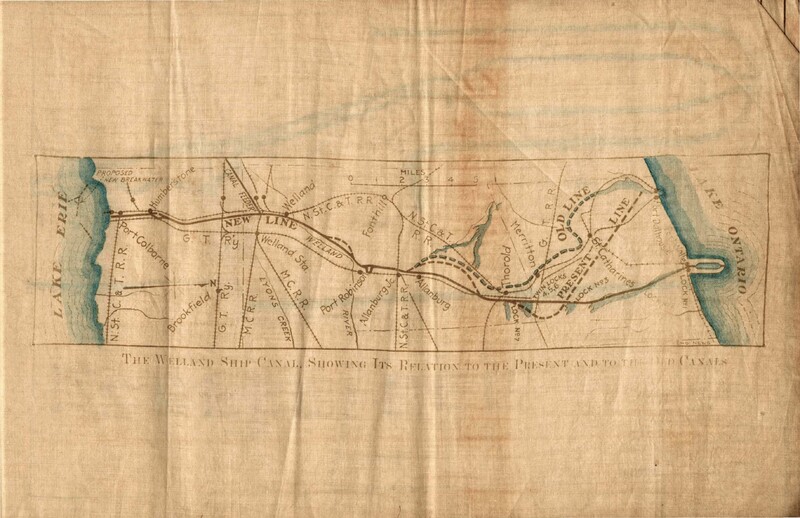
The Welland Ship Canal, showing its relation to the Present and to the Old Canals, 1914. The present and old canals (second and third canals) are represented by dotted lines. The new ship canal (still to be constructed) is represented by a solid line. This map is from the Richard Edward (Ted) Yates fonds.
Third Welland Canal
As ships continued to increase in size the canal needed to be reconfigured to accommodate them. The Commission appointed to study the issue recommended a uniform system of locks for the St. Lawrence and Welland Canal with locks 270 feet long, 45 feet wide, and 12 feet draft (later increased to 14 feet). Construction began in 1875 and the canal opened in 1881, but it was not until 1887 that the increase to 14 foot draft was completed. This canal provided a shorter and straighter route for ships passing through. Many parts of the canal were also significantly increased in size. Unfortunately, this did not prevent it from becoming outdated shortly after its completion. By 1905, it was clear that the canal would need to be significantly enlarged.
The route of the third canal was similar to the second canal from Port Colborne to Allanburg. At this point, a more direct line to Port Dalhousie was built, eliminating Twelve Mile Creek as part of the route. Locks were made of cut stone but were much larger than those in the second canal. This canal remained in operation until 1932, when a fourth canal was completed.
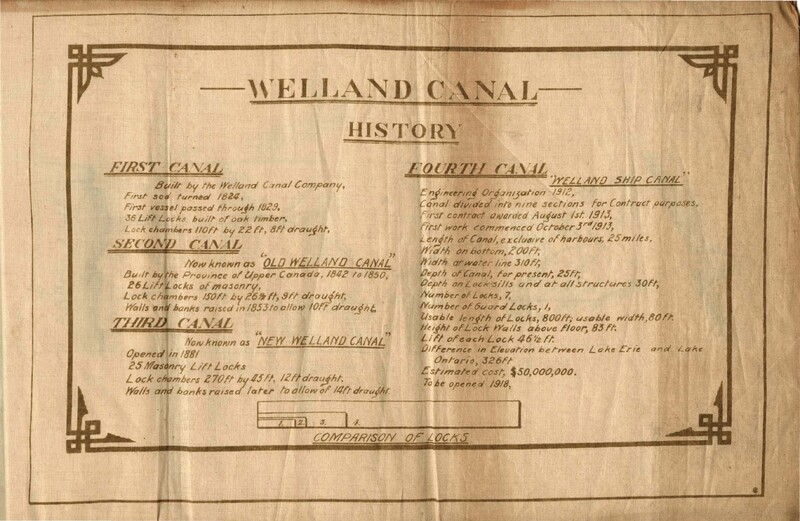
A brief history of the four Welland Canals, providing basic information about dates and construction, 1914. From the Richard Edward (Ted) Yates fonds.
Fourth Welland Canal
Construction on the fourth Welland canal began in 1913 but progress was delayed due to a shortage of workers and material during the first World War. Work was temporarily halted but resumed in 1919 under the supervision of Alexander J. Grant, Chief Engineer. The new canal needed to be large enough to accommodate the Great Lakes steamers of the time. The route largely remained the same from Port Colborne to Thorold. From here, the canal followed Ten Mile Creek Valley and joined Lake Ontario at Port Weller, just east of Port Dalhousie. It was necessary to construct a harbour at Port Weller as a natural one did not exist. The canal has seven lift locks and one guard lock. It was opened in 1932 and is officially known as the Welland Ship Canal. This canal remains in operation. The images of construction displayed here are part of the Welland Canal Lantern Slide collection.
Additional Resources
First Welland Canal
Books
Mr. Merritt's Ditch: a Welland Canal album / Roberta Styran and Robert Taylor. SPCL 3143.4 S856 1992
The Canal Builders: the building of the first Welland Canal / John Bassett
New York State influence on the first Welland Canal / Roberta Styran. SPCL FC 3143.5 S85 1992
The location of the north entrance channel of the 1st Welland Canal, 1824-1829 / J.K. Jouppien. SPCL FC 3143.7 E94 J68 2003
The construction and operation of the first, second and third Welland canals / John N. Jackson. SPCL 3143.42 J335 1990
This Great National Object: building the nineteenth century Welland Canals / Roberta Styran and Robert Taylor. SPCL 3143.5 S858 2012
Archival Resources
Welland Canal/St. Lawrence Seaway Authority fonds RG 422
Report on the Expenditure of the Welland and Burlington Canals, 1830 RG 463

Second Welland canal showing old and new canal along Chippawa Creek in Port Robinson, ca. 1868. This plan is part of the Welland Canal / St. Lawrence Seaway Authority fonds.
Second and Third Welland Canals
Books
Report of the Chief Engineer of Public Works, on the enlargement of the Welland Canal / Public Works Canada, 1872. SPCL FC 3143.4 C335
The construction and operation of the first, second and third Welland canals / John N. Jackson. SPCL 3143.42 J335 1990
This Great National Object: building the nineteenth century Welland Canals / Roberta Styran and Robert Taylor. SPCL FC 3143.5 S858 2012
Archival Resources
Welland Canal/St. Lawrence Seaway Authority fonds RG 422
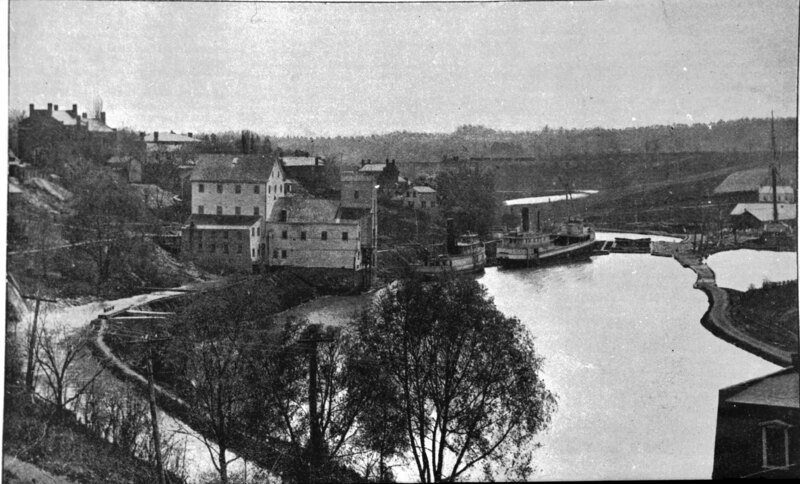
Second Welland Canal at Lock 3. This image is from the Ivan S. Brookes fonds.
Fourth Welland Canal
Books
Welland Ship Canal, 1924-1922. SPCL FC 3143.42 H572 1933
The fourth Welland Ship Canal: history and engineering detail / Detroit Board of Commerce. SPCL FC 3143.42 D47
This Colossal Project: building the Welland Ship Canal, 1913-1932 / Roberta Styran and Robert Taylor. SPCL 3143.5 S856 2016
Welland Ship Canal / Department of Railways and Canals. SPCL FC 3143.4 C35
Archival Resources
Welland Canal/St. Lawrence Seaway Authority fonds RG 422
Welland Canal Lantern Slide Collection RG 583
Richard Edward (Ted) Yates fonds RG 649
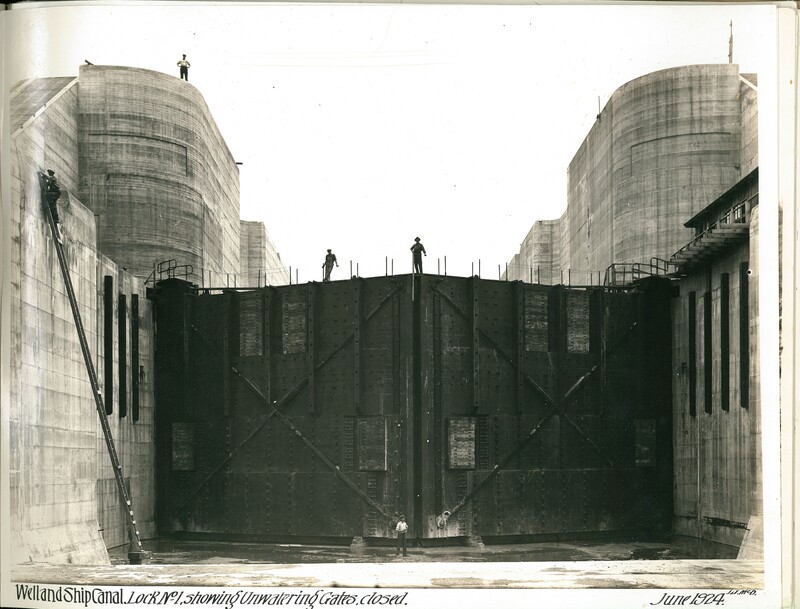
Lock No. 1 unwatering gates, Welland Ship Canal, 1924. This image is from the Welland Canal photobook from the Sykes Welland Canal fonds.
